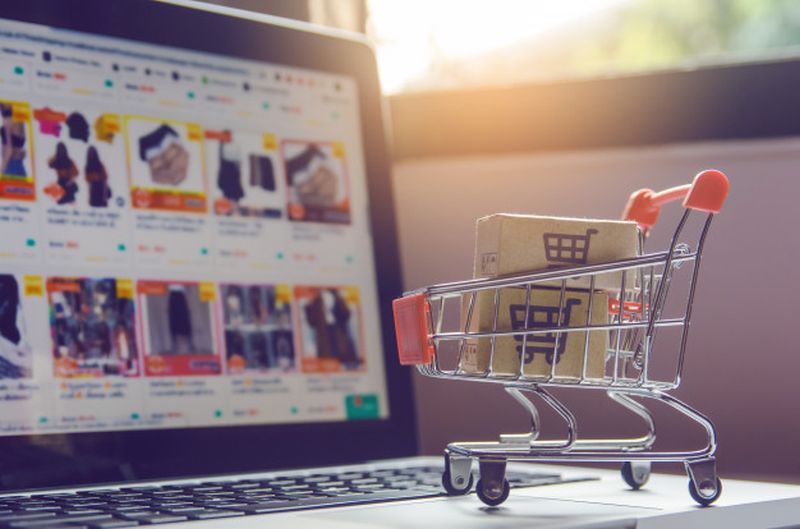E-commerce is nothing new in the world of business, but it’s during the 2024 coronavirus pandemic that its prominence grew significantly. The stay-at-home orders implemented countrywide led to the closure of most brick-and-mortar businesses.
Only those that traded essential goods and services were allowed to open. And even then, not many people were willing to risk contracting the highly contagious and lethal virus whose cure is yet to be found. The internet became an instant hit among businesses, and this is how the rise of e-commerce kicked off!
In this post, we take a look at various key milestones that have characterized the e-commerce evolution to date. We’ll analyze the past, present, and future of online shopping and how Covid-19 is impacting it.
The idea is to help you understand the importance of having an active web presence for your business going forward. We’ll also show you effective e-commerce platforms that you can implement and start trading your goods or services online right away.
Let’s dive straight in!
What is e-commerce?
This is simply the process of buying or selling goods and services over the internet. Some years ago, e-commerce was only used to refer to the sale of physical products on the web. Today, it encompasses all kinds of commercial transactions, including those involving the exchange of intangible things.
E-commerce before 2024

According to Business Insider, the US e-commerce industry grew by 14.9% in 2019 compared to the year earlier. But that was not all. The sector also surpassed 10% of total retail sales for the first time in 2019 and showed no signs of slowing down.
The growth of e-commerce before the pandemic was attributed mainly to the immediate benefits it offered the stakeholders as we’ll find out below.
For starters, e-commerce helped consumers discover new products through awareness campaigns led by affiliate marketers for online marketplaces such as Amazon.
This concept also allowed businesses to empower one another by promoting interdependence. For example, companies involved in selling software as a service (SaaS) could support their clients from other verticals in a bid to boost their own sales.
E-commerce also offered consumers an opportunity to sell items they no longer needed to others. A case in point is eBay which was established as a marketplace where members could sell second-hand items to one another.
Lastly, e-commerce made it possible for consumers to sell products or services on behalf of businesses as influencers and promoters. For instance, a loyal user could apply to become a brand ambassador and charge the seller a commission for marketing their products to other people.
E-commerce in 2024

E-marketer forecasts that e-commerce sales in the US will increase by 18% and reach 14.5% of the total retail sales in 2024. However, this surge won’t compensate for losses that the brick-and-mortar retail businesses will incur after the coronavirus-enforced shutdowns.
Further, E-marketer estimates a drop in total sales (both online and physical) to $4.894 trillion. This represents a 10.5% decrease compared to 2019, as more people cut spending due to the uncertainty caused by the unprecedented pandemic.
E-marketer observes that there’s especially a steady decline in the demand for non-essential goods. Instead, consumers are choosing to spend more on items that improve their health or help to protect them from the devastating effects of the novel coronavirus.
E-marketer’s 2024 report on e-commerce performance in the US offers even more in-depth insights into the impact that the public health crisis has on the market. Some of the main points worth noting include:
The US click-and-collect e-commerce sales to grow to $58.52 billion

Initially, forecasters predicted a 38.6% growth but the pandemic will surge the figure to around 60.4%. This is attributed to the increased growth of the curbside pickup, a modification of “order online, pick up in-store” that allows consumers to buy items online and pick them up from the seller without physical contact. Item delivery is via drive-through windows, which was commonplace in fast-food joints before 2024.
The number of online buyers to increase
The report also predicts an 18% increase in the number of online shoppers as well as their overall expenditure. The pandemic will see more buyers join the online retail space, especially those aged 65 or older. This demographic is deemed to be more vulnerable to the virus hence the need to purchase supplies online and reduce needless physical interactions.
Existing marketplaces to grow even more
Trusted and reliable online retailers that existed before the pandemic will grow more than the new entrants. The report shows that consumers prefer to purchase items from the already established marketplaces like Amazon and Walmart.
E-commerce to continue thriving post-Covid-19

As stores reopen and lockdowns come to an end countrywide, there will be less dramatic shifts in channels of purchasing. The report forecasts that trends like click-and-collect will persist, an indication that e-commerce will continue growing post-Covid-19.
E-commerce after 2024
The onset of the coronavirus pandemic has clearly affected the retail industry, both online and offline. E-marketer forecasts that the brick-and-mortar retail sales will take up to five years to return to pre-pandemic levels. During this recovery phase, e-commerce will help to mitigate the severity of the contagion to the US economy.
The analyst report doesn’t state the contributing factors to the slow recovery of offline businesses despite their eventual reopening. However, these point to the effects of a disease-triggered recession, including:
Job losses
Consumers who are going to lose their income or have it reduced significantly will have to adjust and minimize expenditure.
Purchase of essentials only

With no end in sight for this pandemic, the majority of consumers are spending on the necessities alone and saving the rest. This means businesses in the non-essential industries will not contribute as much to the economy as before.
More people working from home
This directly affects business in the apparel and other work accessories industries who will now have a reduced market to serve as demand for these items dwindles.
Way forward?
A popular adage goes that “when life gives you a lemon, make lemonade.” This is not the time to down your tools, but when you need to gear up and change your selling tactics to survive. If you run a local business with no online presence, this is when you should invest in a web marketplace.
Luckily, platforms such as WooCommerce and Shopify are a great place to start even if you don’t have any coding skills. Check them out now in PieSync, and you could be having your online store up and running by this weekend!





